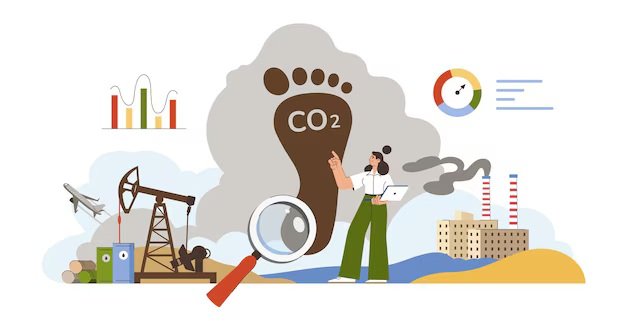How Wangari Maathai Planted the Seeds of an Environmental Revolution
Wangari Muta Maathai’s journey began not in boardrooms but in the Kenyan highlands, where she saw fertile land turn barren and wells run dry. Born on 1 April 1940 in Ihithe, near Nyeri, she was one of the first Kenyan girls to complete secondary education, going on to gain degrees in biological sciences in the US. When she returned to Kenya in 1966, she was shocked at how deforestation had eroded soils, clogged rivers and imposed hardship on farming families. She later earned a PhD in biology and became the first female professor in East and Central Africa.
Through her work with the National Council of Women of Kenya in the 1970s, she heard directly from rural women about the struggle to gather firewood and grow crops in degraded soil. She proposed something radical at the time: planting trees as a local solution. These trees would restore watersheds, supply fuel, and offer income. In 1977, she founded the Green Belt Movement, starting with just seven seedlings in her backyard, nurtured by local women’s groups.
Within just a few years, the movement had established hundreds of grassroots nurseries across the country. Under her leadership, more than 30 million trees were planted—and by the early 21st century, according to an article published by the London School of Economics, that number had grown to over 51 million. These trees were planted across Kenya on farms, public land, roadsides, and school grounds. The movement also trained more than 30,000 women in forestry, beekeeping, food processing, and environmental stewardship—helping them earn sustainable incomes and strengthen local resilience.

A Holistic Approach: Environment, Empowerment and Democracy
Wangari Maathai never viewed tree planting as an isolated environmental tactic. She saw it as entwined with governance, women’s rights and social justice. She famously said: “You cannot protect the environment unless you empower people…they must protect them,” emphasising that environmental restoration must go hand‑in‑hand with civic participation and empowerment.
By the late 1980s, the Green Belt Movement had become a force for political accountability. Maathai led protests that halted the construction of a skyscraper in Uhuru Park and prevented land‑grabbing in Nairobi’s Karura Forest on behalf of corrupt elites. Her activism repeatedly led to arrests, beatings, and attacks from the Moi regime, being labelled “subversive” and even forced from her own office with 24 hours’ notice.
According to National Geographic, in 2002, she entered formal politics, winning a parliamentary seat with 98% of the vote in Tetu and becoming Assistant Minister for Environment in 2003. She brought GBM’s participatory approach into government, overseeing reforestation programmes, forest protection, scholarships for children affected by HIV/AIDS, and grassroots environmental education.
Her global recognition came in 2004 when she became the first African woman to receive the Nobel Peace Prize. The Nobel Committee praised her “holistic approach” that united ecology, democracy and cultural development. She also co‑founded the Nobel Women’s Initiative in 2006 and later served as UN Messenger of Peace and goodwill ambassador for the Congo Basin rainforest.
Lasting Legacy and Contemporary Impact
By the time she passed away in 2011, Wangari Maathai had helped to plant over 50 million trees in Kenya and influenced environmental movements across Africa. Her written works—including The Green Belt Movement: Sharing the Approach, Unbowed, and The Challenge for Africa—offer insight into her methods, philosophy and wider vision for justice in Africa and beyond.
Her legacy continues today in Kenya’s own national reforestation efforts. In 2023, the government declared an annual National Tree Growing Day, planting approximately 150 million seedlings on the first day, with national goals to reach 15 billion trees and 30% tree cover by 2050. This demonstrates how Maathai’s grassroots model has inspired large‑scale policy.
Academic studies confirm that forest restoration driven by community participation can slow soil erosion, improve water retention and boost local livelihoods. A 2014 study of the Albertine Rift showed national population and agricultural pressures drive deforestation, but local initiatives to plant trees help counter these trends when paired with education and community ownership.
One prominent analogue is the Trees for the Future (TREES) initiative, active in Kenya and across nine African nations since 2015. It has restored more than 41,000 ha—about seven times the area of Manhattan—through farmer‑led planting of biodiverse forest gardens. These include fruit trees, legumes, fodder and native species trained for resilience. TREES aims to plant a billion trees by 2030 and has won World Restoration Flagship status from UNEP.
A case study published by The Guardian from the Lake Victoria basin illustrates real-world benefits: smallholder farmers, grouped in clusters of 20 per hectare, planted around 5,800 trees per plot—mixing Acacia polyacantha, fruit trees, vegetables, and fodder. This system protects soils, provides income, and supports local carbon-credit schemes run in partnership with the Wangari Maathai Institute at the University of Nairobi.
Cases, Data and Actionable Lessons for Today
| Initiative | Location | Approx. Trees Planted | Women Trained | Environmental Benefits |
|---|---|---|---|---|
| Green Belt Movement (Maathai era) | Kenya | 30–51 million | ~30,000 | Soil stabilisation, watershed restoration, fuelwood supply |
| TREES forest gardens | Kenya + Africa | 41,000 ha (millions) | thousands | Agroforestry, biodiversity, food security, carbon income |
| National Tree Growing Day (2023 Kenyan) | Nationwide Kenya | ~150 million in one day | nationwide | Public awareness, new policy momentum, forest cover growth |
One inspirational story came in the early 2000s from rural Kiambu: women trained through GBM established nurseries at schools and churches. One group sold seedlings and used the income to pay school fees for orphans; their trees helped recharge nearby springs and stabilise banks. Elders recount that before planting, streams ran dry for part of the year; after five years of trees, water flows lasted through the dry season.
Another example: in Karura Forest on the edge of Nairobi, Maathai’s protests stopped land grabbing by elites and sparked community reforestation of 23 acres with nearly 9,500 trees. That effort both restored the forest and became a recreational green oasis for the city, now maintained with eco‑tourism revenue.
Environmental experts today view Maathai’s model as exemplary of sustainable, community‑led restoration. As the UN’s Inger Andersen has noted, projects like TREES build on Maathai’s legacy by combining ecological goals with poverty reduction and resilience.
Conclusion and Advice for Environmental Action
Wangari Maathai’s achievement teaches us that tree planting is not merely ecological—it’s deeply personal, political, and empowering. She showed that by investing in women, restoring land and building civic awareness, we can create lasting change.
If you would like to apply her lessons today, here is what to consider:
- Start with people: involve local communities directly, especially women, and link tree planting to income generation and resource restoration.
- Ground restoration in training: teach agroforestry, seedling care and environmental literacy, replicating GBM’s educational approach.
- Combine activism with action: defend local land, speak against policies that degrade natural resources, and use environmental campaigns as platforms for civic engagement.
- Monitor and sustain: ensure seedlings survive, involve participants in long‑term care, and track impact via local data (as TREES does using carbon‑credit audits).
- Advocate for policy alignment: push governments to adopt tree‑cover targets, public planting holidays, and integrate restoration into national constitutions, as Kenya inserted the right to a clean environment in its 2010 constitution, thanks in part to Maathai’s influence.
Wangari Maathai once remarked, “The more you degrade the environment, the more you dig deeper into poverty.” Her life and legacy prove that reversing that degradation offers not just environmental recovery but economic empowerment, social justice and democratic voice.
Anyone today—from community organiser to policy maker—can build on her framework: plant trees, nurture people, defend land and inspire lasting transformation.







